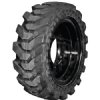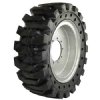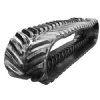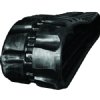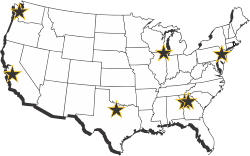ASV Type Non Metal Core Tracks
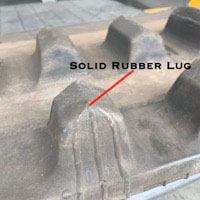 ASV Machines are great for various types of terrain and multi-purpose use. The great thing about these track loaders is their ability to be so versatile on slopes and hills. A lot of this has to do with the balance of weight being distributed through the machine. Other track loaders have a huge amount of weight in the back of the machine, making it difficult to maneuver sideways on hills as well as get over the top of a slope upright. The other half of the versatility is the track itself. Our ASV-style tracks are all made with either tensile-like steel cords running throughout the rubber or an aramid-cord system performing the same concept of strength. These cords are actually supporting the structure and integrity of the track allowing to track the conform to the terrain itself. This is going to give an immense amount of traction because of the flexibility to the rubber track and allow the machine to work and go through environments that other machines will not be able to maneuver through.
ASV Machines are great for various types of terrain and multi-purpose use. The great thing about these track loaders is their ability to be so versatile on slopes and hills. A lot of this has to do with the balance of weight being distributed through the machine. Other track loaders have a huge amount of weight in the back of the machine, making it difficult to maneuver sideways on hills as well as get over the top of a slope upright. The other half of the versatility is the track itself. Our ASV-style tracks are all made with either tensile-like steel cords running throughout the rubber or an aramid-cord system performing the same concept of strength. These cords are actually supporting the structure and integrity of the track allowing to track the conform to the terrain itself. This is going to give an immense amount of traction because of the flexibility to the rubber track and allow the machine to work and go through environments that other machines will not be able to maneuver through.
All of our ASV tracks are made with 100% new rubber which eliminates any bonding issues from casts making the tracks last longer without extensive cracking. Typically your standard track loader track on a steel undercarriage system will run for about 1000 hours, yet the ASV-type tracks have the potential to see 2000 if maintained and kept in the proper conditions. The way ASV machines are set up on average, track life can be 1500 to 2000 hours. That being said, some ASV tracks have lasted over 4000 hours.
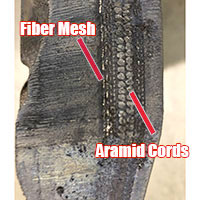 As you can see in the picture to the left, the tensile-like polyester mesh and the aramid cords here are strategically placed throughout the track rubber. This will allow for flexibility and conformability to terrain when the track meets the ground. The cords are also forcing the track to be bound together, not letting it stretch to help eliminate derailing. This track was in service for several hundred hours before we cut a sample section and you can see how perfectly aligned the cords are even after extensive time in the field.
As you can see in the picture to the left, the tensile-like polyester mesh and the aramid cords here are strategically placed throughout the track rubber. This will allow for flexibility and conformability to terrain when the track meets the ground. The cords are also forcing the track to be bound together, not letting it stretch to help eliminate derailing. This track was in service for several hundred hours before we cut a sample section and you can see how perfectly aligned the cords are even after extensive time in the field.
The guide lug design varies from model to model. For the smallest series like the ASV RC30, there is only one row of lugs down the center of the track and that is the guide lug. The 15-inch wide tracks that run on the Cat 257 series have a row of drive lugs down the center of the track plus a row of guide lugs on the outside that help keep the track from de tracking from the machine. The drive lugs fall into the bogey drive wheel to drive the machine while the outside guide lugs simply hug the rollers and the undercarriage to keep the track straight. Once you get to the 18-inch wide tracks there are some B series options that only have two rows of lugs and the C series that has two sets of drive lugs and one set of guide lugs. The same concept applies where two rows of lugs drop into the drive system while one row on the outside keeps the track installed snug against the roller system. Once you get to the 20-inch track there are four rows of lugs.
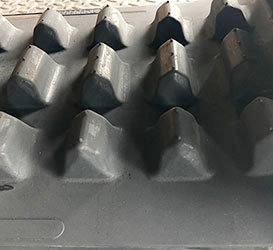 | This is an example of the three rows of lugs you would see inside a C-Series Cat like the 287-C model. Two rows of drive lugs and one row of guide lugs give the C-Series a more durable undercarriage while preventing any side-to-side track movement. |
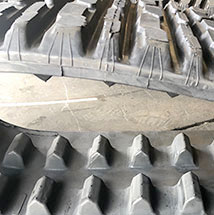 | Here is an example of a standard B series non-metal core track like the Cat 277-B and Cat 287-B series rubber track. There is no guide lug on the outside which has been upgraded to the C-Series models. |
